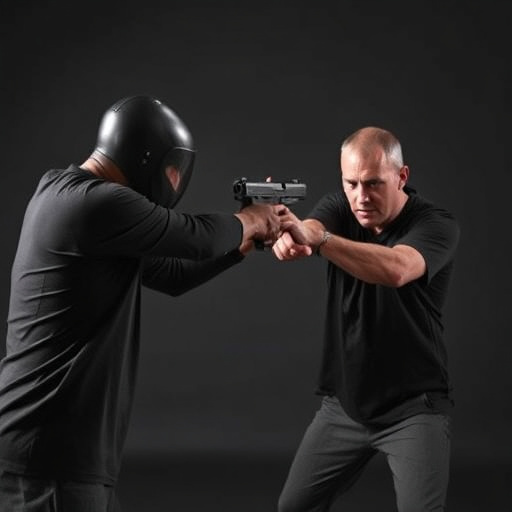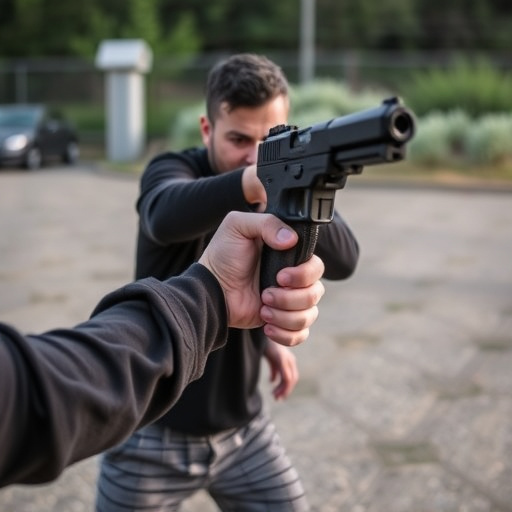Taser effectiveness, measured by paralysis duration (3-5 minutes, varying with models), is crucial for self-defense tool selection. Choosing a best value stun gun enhances personal safety, providing time to escape. Key factors include ease of use, reliability, durability, and weather resistance. Higher voltage levels offer longer paralysis but carry greater risk and legal consequences, necessitating responsible balance. Legal implications vary across jurisdictions, with variable force and deployment scenarios; understanding these is vital to avoid severe repercussions. Paralysis duration ranges from seconds to minutes, highlighting the need for adherence to legal guidelines in self-defense use of stun guns.
In today’s world, understanding the effects of tasers and their impact on paralysis duration is crucial for both law enforcement and individuals pursuing self-defense. This article delves into the critical issue, “Taser Effectiveness: Understanding Paralysis Duration,” offering insights into the length of paralyzing effects. Additionally, we explore practical considerations in self-defense with an emphasis on the “best value stun gun” and navigate the legal implications surrounding taser deployment.
- Taser Effectiveness: Understanding Paralysis Duration
- Self-Defense Considerations: Choosing the Best Stun Gun
- Legal Implications: Navigating Use and Consequences
Taser Effectiveness: Understanding Paralysis Duration

Taser effectiveness, especially in terms of paralysis duration, is a critical aspect to consider for anyone interested in self-defense tools. The primary goal of a Taser (or stun gun) is to disable an assailant long enough to allow the user to escape or summon help. Understanding the duration of paralysis is essential when evaluating the best value stun gun for self-defense. Studies suggest that Tasers can induce muscular incapacitation for several minutes, giving users valuable time to remove themselves from dangerous situations.
Paralysis duration varies based on factors like the model of Taser, the number of probes deployed, and the individual’s physical condition. Modern Tasers are designed to deliver a powerful electrical shock, disrupting muscle control and causing temporary paralysis. This disruption can last anywhere from 3 to 5 minutes, although some advanced models may offer even longer periods of immobilization. Knowing this range is crucial for users to make informed decisions about their personal safety and the effectiveness of the best value stun gun as a self-defense tool.
Self-Defense Considerations: Choosing the Best Stun Gun

When considering self-defense options, choosing the best value stun gun can be a game-changer in potentially life-saving situations. Paralysis duration from taser deployment varies, but with the right tool, individuals can gain precious time to escape or deter an attack. The best stun guns for self-defense deliver powerful jolts that temporarily disable an aggressor, giving users a chance to retreat safely.
Factors to look for include ease of use, reliability, and durable design. A best value stun gun should be easily accessible and comfortable to hold, with consistent performance in various weather conditions. Understanding the different voltage levels and their effects is crucial; higher voltages generally result in longer paralysis durations but may increase risk and legal implications, so it’s essential to balance power with responsibility.
Legal Implications: Navigating Use and Consequences

The legal implications of using a taser as a self-defense mechanism are complex and vary significantly depending on jurisdiction. When considering a best value stun gun for self-defense, it’s crucial to understand the potential consequences. Each region has its own laws governing the use of force, including tasers, with varying levels of permission required and acceptable scenarios for deployment.
Navigating these legalities is essential to avoid severe repercussions. Using a taser beyond what’s considered reasonable or necessary in self-defense can lead to criminal charges, especially if it results in prolonged paralysis. The duration of paralyzing effects from tasers has sparked debates, with studies suggesting that the impact can last from several seconds to minutes, depending on factors like model and user technique. This variability underscores the importance of adhering to legal guidelines and using force only as a last resort for self-defense.
Understanding the duration of paralysis from Taser deployment is crucial for both individuals seeking personal protection and legal professionals navigating related cases. While these devices have been hailed as valuable tools for self-defense (in the hands of trained professionals), the variability in paralysis duration highlights the importance of choosing a stun gun that offers the best value and effectiveness. In light of the legal implications associated with Taser use, it’s essential to be aware of one’s rights and responsibilities when considering these devices for personal safety. Ultimately, selecting the most suitable self-defense tool—whether it’s a stun gun or another method—should be an informed decision based on comprehensive research and professional guidance.
